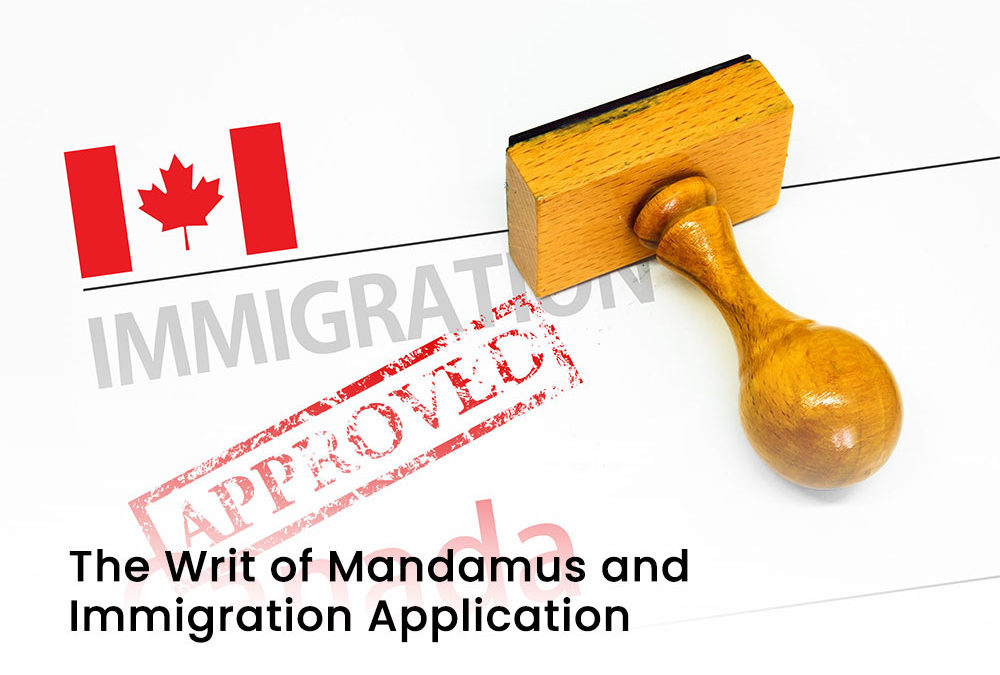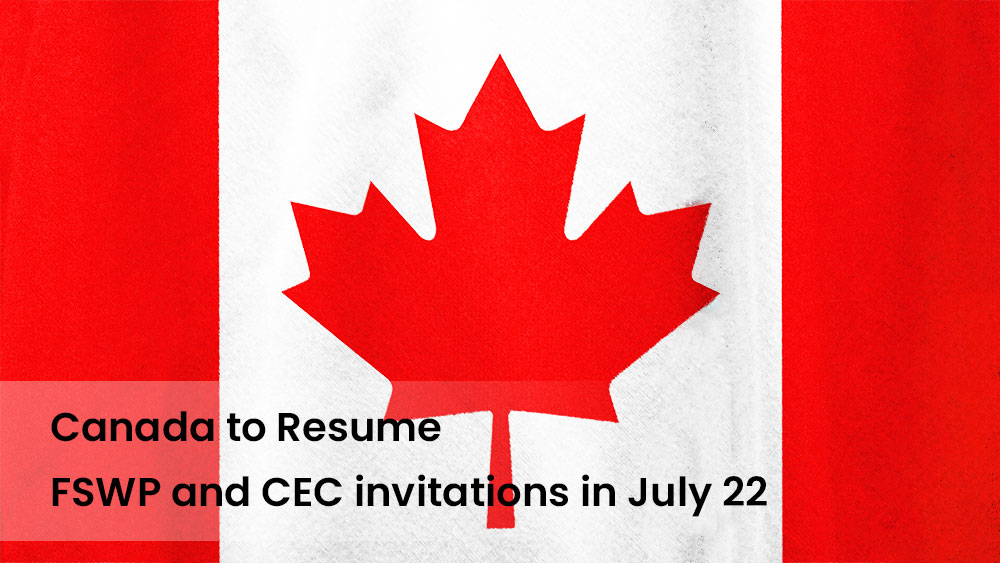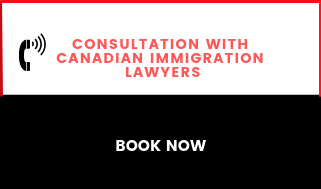
by Immilaw Team | Jun 18, 2022 | Canada Immigration
Spousal sponsorship is an essential aspect of the immigration system in Canada. You can sponsor your spouse, common-law partner, or conjugal partner to become a Canadian permanent resident if you are a Canadian citizen or permanent resident. In addition, a Canadian or permanent resident (the Sponsor) can sponsor their spouse or common-law partner (the sponsored person) for permanent residence in Canada under this scheme. Inland sponsorship is a type of spousal sponsorship offered to couples currently living together in Canada and whose spouse/common-law partner is in Canada on a transitory basis, such as a worker, student, or guest. The goal of completing an inland sponsorship application is to see if your spouse or partner qualifies for an open work permit.
Note: A work permit is a legal document that authorizes a foreign national to work in Canada. A foreign citizen with a valid open work permit is not restricted to working for a single employer and can work for various employers in multiple places across Canada.
Free Online Canadian Immigration Assessment
The following immigration programs are the most popular sources of open work permits:
1. Spousal Sponsorship (Inland) or Common-Law Sponsorship (Common-Law Sponsorship)
2. Permits to Work After Graduation (PGWP)
3. Canada’s International Experience (IEC)
4. Bridging the Gap with an Open Work Permit (BOWP)
Who is eligible to apply for an open work permit for their spouse?
- Spouses or common-law partners of work visa holders under the Atlantic Immigration Program (AIP).
- Quebec selection certificate (CSQ) holders’ spouses or common-law partners.
- Provincial nominees’ spouses or common-law partners.
- Bridging open work permit (BOWP) holders’ spouses or common-law partners.
- Study permit holders’ spouses or common-law partners.
- Recent Public Policy, dated April 7, 2022, for spouses or common-law partners of someone who sought PR in Canada.
- Spouses or common-law partners of non-BOWP open work permit holders.
A foreign national must have sought permanent residency sponsorship before applying for a spousal sponsorship open work permit. Inland spousal sponsorship allows candidates to stay in Canada while their permanent residence application is being processed.
A single hard copy envelope may be used to submit the sponsorship, permanent residency, and open work permit applications.
Holders of spouses with open work permits are free to work wherever they like.
Sponsering Spouse
Open Work Permit Criteria for Spouses
- Under the Spousal/ Common-Law Partner Sponsorship Immigration Program, an application for permanent residence must be submitted. Both the applicant and the Sponsor must meet all of the qualifying conditions for spousal or common-law partner sponsorship.
- The applicant must be a visitor, student, or worker having a valid temporary resident status.
- The applicant and the Sponsor must meet all of Immigration, Refugees, and Citizenship Canada’s eligibility standards (IRCC).
- (IRCC) seeks to process Spousal Sponsorship applications within 12 months.
- With certain limits, a spousal open work permit permits the spouse of a temporary Canadian permit holder to work anywhere in Canada for any employer.
- The citizen with an acceptable legal status.
- According to Canadian law, you are not criminally or medically inadmissible.
What is the duration of a spouse’s open work permit?
The work permit will be issued or extended until the PR application procedure is completed for Spousal Sponsorship Open Work Permit.
What are the prerequisites for applying for a Spousal Open Work Permit?
1. The applicant must be genuinely related to, or in connection with, the principal applicant, permanent resident, or citizen. Because the spousal open work visa is dependent on your relationship with your husband or common-law partner, providing appropriate documentation of your actual relationship is critical.
2. To apply for a spousal open work permit, your spouse must be a Canadian citizen with an acceptable legal status.
3. Canadian law states you are not criminally or medically inadmissible.
4. It is possible to apply for both an open work visa and sponsorship simultaneously.
5. They can apply for an open work visa online once IRCC has approved their sponsorship application.
Important information: Giving incorrect or misleading information on these forms is a serious violation. Verification of the information you submit on your application is required.
Before paying your fees, double-check that you are eligible and have provided all the needed information.
Contact Us

by Immilaw Team | May 9, 2022 | Canada Immigration
When you’re waiting for an immigration application to be processed, time flies (Tempus fugit), or it ticks by extremely slowly. This is why understanding the rights you are entitled to and demanding they be enforced is needed. It isn’t unheard of for the immigration regime in Canada and its agencies, such as the Immigration, Refugees and Citizenship Canada (IRCC), to take time processing applications. Some tend to take longer than others. Due to complicating factors, complex cases, and other external factors beyond control, such as the COVID-19 pandemic, cases might not get the attention they deserve. Ex nihilo nihil fit is a popular Latin saying, “nothing comes from nothing.” So, if you want the desired results, a little extra push is needed to ensure your application reaches the finish line.
If your immigration application is pending with the IRCC and you believe it’s taking longer than usual, you have a judicial remedy at your disposal. This remedy is known as the writ of mandamus.
Free Online Canadian Immigration Assessment
What Is a Writ of Mandamus?
The writ of mandamus originated from ancient English law, wherein the royals issued it as official commands. In Latin, it translates to “We command.” These official commands essentially laid out the specific acts the subjects had to undertake within their expected duty, wherein their failure not to do so resulted in adverse effects. From a legal perspective, a writ of mandamus is issued by a superior court to a lower one, a public authority, or a government officer to carry out duties they are obligated to perform by law.
How Is It Relevant in Context to Immigration Applications?
A writ of mandamus is essentially used to compel the IRCC to decide on pending immigration applications. Regardless of whether it is a temporary or permanent residence visa application, this remedy can be used. Similarly, it is also a helpful remedy in matters of any delay in application processing associated with a temporary residence, such as a study or a work permit. It can also be used for applications including and not limited to matters related to citizenship, temporary residence, temporary resident permit, and criminal rehabilitation.
Instead of opting for a specific case inquiry and completing the IRCC to process the application, the writ of mandamus is a better means. The IRCC is constantly receiving a flux of case-specific inquiries. Most of them are unfortunately left unaddressed. This means most applicants are left waiting for answers which worsen the already stress-inducing delay they are dealing with. Seeking this writ at the Federal Court forces the IRCC for a prompt response.
You need not worry about any adverse actions by the IRCC upon filing this writ application with the Federal Court. It will in no way affect or hamper your immigration application processing. The rule of law is of fundamental importance in Canada. This remedy is accessible to any applicant who believes the processing of their immigration application is subjected to unreasonable delay.
Am I Eligible for This Remedy?
A few basic and specific legal requirements must be met before a court can issue a writ of mandamus. The Canadian Bar Association provides a detailed guideline about this. The primary condition determining whether you can obtain a writ of mandamus is the processing time involved. If the average processing time of an application is exceeded and the delay is unreasonable, you are eligible for using this remedy.
Awaiting the decision about your immigration application can be a source of acute anxiety and stress because it determines your future. Some delays can be unreasonable, which is an effective tool to fix this situation. However, one thing that has to be done is to ensure a reasonable amount of time for processing the application has passed, and it is beyond the average. You can check this by visiting the Canadian government’s official website.
Usually, the processing time varies from a couple of weeks to a year depending on the complexity and nature of the application. It can feel like a long-drawn-out process, and some delays are unacceptable even with the ongoing pandemic. Ensure that your immigration application is completed correctly and there are no apparent reasons why the IRCC has held it. After this, you can seek a writ of mandamus.
A wonderful thing about this remedy is anyone can seek it. It means that even those outside of Canada are eligible for this. This remedy is available for applicants who have submitted and correctly filled their immigration applications to the IRCC. Your residence or location is irrelevant when the application is filed, or the federal court considers the matter.
How Do I Apply?
All mandamus applications for immigration-related purposes are filed with the Federal Court. It starts with a persuasive yet well-presented demand letter encouraging the IRCC to investigate why an application has not been processed yet. The actual process of this writ application is based on the conventional judicial review process. The three parts of it involve filing and issuance as well as the service of the Application for Leave and Judicial Review based on a request of mandamus. The key facts associated with your case and the relief you seek will be included in the Application for Leave and Judicial Review. The prima facie case for a mandamus order must be fulfilled, while the facts must be presented briefly, clearly, and persuasively.
The COVID-19 pandemic has resulted in the disruption of specific processes. However, this step is sufficient to push the IRCC to continue or complete the processing within 30-60 days of filing. Hiring the services of an experienced Canadian immigration lawyer is the first step toward this goal.
Contact Us

by Immilaw Team | May 6, 2022 | Canada Immigration
The Canadian Immigration minister Sean Fraser announced that the government would allow Express Entry to FSWP (Federal Skilled Worker Program), CEC (Canadian Experience Class), and FSTP (Federal Skilled Trades Program). As a result, the Express Entry invitation will resume in early July this year. In addition, the minister made several other significant announcements, such as that Immigration Refugees and Citizenship Canada (IRCC) will be offering an open work permit extension of up to 18 months to PGWP (Post-Graduation Work Permit Holders).
Key Highlights of the announcement
- Express entry invitation to resume in early July this year to FSWP, CEC, and FSTP.
- Openwork permit extension up to 18 months to PGWP.
- The government will herald the processing of a large number of new Express Entry applications.The current processing time taken ranges from seven months to 20 months. The new timeframe for processing would be six months which will help faster and quicker service to the applicants.
- Additionally, the applicants will no longer be required to remain in Canada during the processing period.
- Extended work permits for up to 18 months will be provided to those whose PGWPs are going to expire between January and December 2022.
- Applicants applying for an open work permit will be granted a permit until the end of 2024, during their period of waiting for their permanent residence.
- The immediate family members included in the applicant’s permanent residence application will be eligible to get their open work permit if they are not in Canada.
Open Work Permit
Express Entry during the Pandemic
Express Entry is a point-based application management system for different immigration programs. The eligible candidates get a Comprehensive Ranking System (CRS) score for various factors such as their age, education, language skills, work experience, and more. Various Canadian immigration programs that Express Entry System manages are – the Canadian Experience Class (CEC), the Federal Skilled Workers Program (FSWP), and the Federal Skilled Trades Program (FSTP).
Express Entry
IRCC invites the candidates based on their scores and not their eligibility. Due to travel restrictions during the Pandemic, many candidates who received Invitations to Apply for Permanent Resident visas could not reach Canada. Therefore, IRCC invited a large number of CEC candidates already in Canada. This approach enabled Canada to accept 405000 permanent residents in 2020-2021, the highest newcomer total in Canadian history. IRCC also invited PNP candidates during the Pandemic to support provincial immigration goals.
Pandemic-related challenges and shifts in the Express Entry Policy have resulted in a backlog of immigration applications and, therefore, delays in smooth processing. This has drastically affected the invitation to FSWP candidates since December 2020 and CEC candidates since September 2021. This scenario was when Canada was dealing with a historic labour shortage. The new Labour Force Survey revealed unemployment for the immigrants at its lowest and employment growing faster than the Canadian population.
This year, Canada plans to admit a new record number of newcomers as per the 2022-2024 Immigration Levels Plan. Canada wants to welcome 431,645 newcomers in the year 2022.
The CEC candidates have been losing their work permit status due to a lack of Express Entry invitation to apply for a Bridging Open Work Permit (BOWP) while waiting for IRCC to process their permanent residence application. BOWP bridges the gap between the expiring of the work permit, such as the PGWP, and the candidate finally receiving permanent residence.
IRCC made an exception to this policy between January and July 2021 by offering a one-time work permit of 18 months duration. The aim was to give PGWP holders more time to get the required work experience to be eligible for permanent residence. In addition, this helped such permit holders sail through the Pandemic, which negatively affected them (e.g. layoffs in the early pandemic days).
There is a temporary decline in the Express Entry target as Canada is keen to wind down its Temporary to Permanent Residence (TR2PR) Program to accommodate other priorities. Through this program, IRCC invited up to 90,000 international graduates and essential workers to apply for permanent residence between May and November 2021.
The Express Entry landings are intended to increase in the next two years as per the Immigration Levels Plan 2022. IRCC plans to invite more than 110,000 newcomers through Express Entry by 2024.
IRCC is processing more applications
There is a cut down in the backlog of the applications from September 2021 to March 2022. This is because many pending applications have been processed and will gain speed to clear off the complete backlog. As a result, the backlog was cut from 112,000 to 48,000 applications in March 2022.
IRCC has finalized 156,000 permanent residence decisions between January and March 2022. Additionally, IRCC has processed more than 100,000 work permit applications in the first quarter of 2022.
Under its Immigration Levels Plan, Canada is seeking to welcome more than 430,000 new immigrants each year, which is the highest in its history.
If you are seeking the help of the best immigration lawyers in Canada, then you can contact ImmiLaw Immigration confidently.
Renowned as the top immigration law firm in Toronto, Canada, we offer you the best immigration strategies and legal guidance to ensure your immigration process will be fast, smooth and cost-efficient.
Free Online Canadian Immigration Assessment
Feel free to contact us for your queries. you can reach us at info@immilawimmigration.com.
Contact Us

by Immilaw Team | Apr 20, 2022 | Canada Immigration
Are you awaiting a decision on your application for common-law or spousal sponsorship? If yes, Canada might offer you an open work permit, which makes you eligible to work anywhere in the country. Specifically, the Spousal Open Work Permit (SOWP) provides an opportunity for inland sponsorship applicants to work while the processing of their immigration applications is underway.
Spousal Open Work Permit Benefits
The significant benefits that SOWP offers are:
1. You can work in Canada
As a spousal sponsorship applicant, you can stay and work in Canada while waiting for the decision on your spouse’s immigration application. This is because the time needed for Immigration, Refugees, and Citizenship Canada (IRCC) to process the application is approximately 12 months. Therefore, having a SOWP is beneficial because it entitles you to work in Canada during the waiting period.
2. You can work anywhere in Canada
A foreign national with a closed work permit can only take up one type of occupation or work for one employer. On the other hand, an open work permit allows you to take up any job or work for any employer. Besides, employers hiring SOWP holders are not required to get a Labour Market Impact Assessment (LMIA) done.
3. You can live with your spouse
If you don’t have a SOWP or any other temporary status, you will have to complete the immigration process from outside Canada. Having a SOWP allows you to live with your spouse in Canada while processing the sponsorship application.
4. You can gain work experience in Canada
If you can gain some work experience before becoming a permanent resident of Canada, you can give a boost to your career growth. Studies show that the greater the number of years of experience, the higher your earnings. In addition, it provides you with opportunities to network, builds relationships, and improve your English language skills, if required.
SOWP Eligibility Criteria
Common-law partners and spouses who already live together are eligible to apply for inland sponsorship. However, the foreign partner should have temporary status as a visitor, student, or worker. The requirements that sponsorship candidates must meet to obtain a SOWP are:
- They must apply for permanent residence as per the Spouse Common-Law Partner Class
- They must have a permanent resident spouse, common-law partner, or Canadian citizen to file an application for sponsorship on their behalf
- Live at their sponsor’s residence
- They must have a valid Canadian temporary resident status or an approved restoration status application and authorization to work.
After applying for permanent residence status via spousal sponsorship, foreign spouses may simultaneously submit their open work permit application at any time they want.
In-principle approval of your application for your spouse’s permanent residency status makes you eligible to apply for SOWP online. Your spouse will receive a letter from the IRCC indicating that your partner meets the permanent residency eligibility criteria but must pass the background, medical, and security checks.
It may be possible to extend the SOWP if they don’t decide on immigration before its expiration date. However, SOWP holders should submit a request to extend their permits before expiration.
Getting a SOWP is beneficial as you can stay with your spouse or partner in Canada and start working to build your career.
You can call Immilaw Immigration at +613 704 5757 and schedule a free work permit consultation.
Free Online Canadian Immigration Assessment
One of our experienced immigration lawyers will clarify all your doubts regarding the SOWP. In addition, you can reach us at info@immilawimmigration.com.
Contact Us

by Immilaw Team | Mar 19, 2022 | Canada Immigration
Visa rejection can be quite a hassle. However, studies indicate that the chances of rejection on the visa applications submitted by immigration lawyers are as low as 10%. This is significantly lower than the rejection rate seen among applications submitted by applicants themselves and those offered by immigration consultants.
Likewise, reports show that foreign nationals who prepared their visa applications were likely to face a rejection 19.3% of the time. Many applicants consult with immigration consultants to prepare their applications and submit them. Immigration data revealed that the rejection rate was not lowered all that much. Even after obtaining professional counsel and services from immigration consultants, the rejection rate was as high as 18%. This figure is barely lower than the rejection rates faced by self-applicants.
Ultimately, there is not that much of a difference. You might as well do it yourself than pay tones to an immigration consultant who does not add value to the application. However, there is a way to improve the chances of acceptance significantly. The same reports indicated that consulting with immigration lawyers changed the game entirely. Study permits, work visas, and visitor visas were processed more smoothly and promptly, and the rejection rate was lowered to a mere 10.4%.
Canadian lawyers are seasoned experts well-versed in the legal aspects of immigration requirements and possess strong analytical skills. They stick to ethical practices and choose to study the case thoroughly before putting forward a convincing and robust application that is factual, accurate, and substantial. Lawyers don’t beat around the bush either- they will tell you frankly if your chances are too low.
Unlike immigration consultants, immigration lawyers go the extra mile to ensure everything is in place. Immigration lawyers welcome challenging cases and thrive on using their educational strengths and advanced research skills to chase success. Every application is unique, and to the trained eye, the chances of acceptance can be estimated promptly. Immigration lawyers stand out from consultants by maintaining a highly professional, no-nonsense approach.
Canada has many immigration consultants but not many immigration lawyers, as clearing law school and subsequent bar admissions is quite challenging. The level of education among immigration lawyers is significantly higher than immigration consultants who usually have a diploma only. When you pay an immigration lawyer to handle your case, you pay for the years of domain expertise and tenacity to guarantee success.
Rejections are a bigger deal than what consultants make you believe. Clients generally don’t tend to raise complaints when their applications have been rejected after working with consultants. Instead, they choose to switch up to immigration lawyers. They regret spending a lot on the consultants who encourage them to reapply without taking the initial rejection seriously. The problem is that once an application has been rejected, it is tough to get approval again.
Immilaw Immigration brings you highly experienced Canadian immigration lawyers who guarantee optimal visa chances and assist you right from the beginning of the process. We have offices in convenient locations across Canada, including Winnipeg, Halifax, Toronto, and Ottawa.
Free Online Canadian Immigration Assessment
We offer premium services, including personalized lawyer-submission letters to the visa officer, significantly improving your success rate. For more information and to get in touch with us, contact us today.
Contact Us






